Construction of geometric figures drawing. Form of simple geometric bodies

Still-life with geometric shapes- How to draw geometric shapes separately we know from this page, also learned how to use the eye and the prospects for building the volumes of figures. Okay. And now we will take two three figures with you, we will place it on the subject plane and make a drawing. Most likely when you made the layouts of geometric shapes, you got them different sizes, different. For still life with geometric objects, we need figures preferably different in size, so that they did not have the same volumes in the composition. So more interesting and harmonious.
I take a bowl, cone and cube. The cone is a bit of the same in size with a ball, but it is directed up, and if a shark static figure, then the cone is dynamic, it is he who sets the format-still life in the sheet will be placed vertically. Well, the third I will take a cube. It will be less than two other figures, which will give a variety of "assortment".
Look in the photo on the right. Here is my still life. The subject plane and the figures are white, and we will consciously assume that the wall will be also white. We will do this in order to do not interfere with additional tones in the picture. Now we will not draw, but first of all, analyze and transmit on the sheet what we already know. And to know by this time we must have the main laws of the drawing. And knowing the basic rules and laws in the figure can already after the construction stage, do not often resort to helping nature, as it can give you a lot of reasons in order to distract your attention from the main thing that we fix the knowledge.
Also on this fragment pattern can be seen how shadows will behave. The most active shade of the cube. All shadows that will be deleted into space will lose their activity, but! Anyway will remain shadows. Do not forget about it. Now let's look at all work:
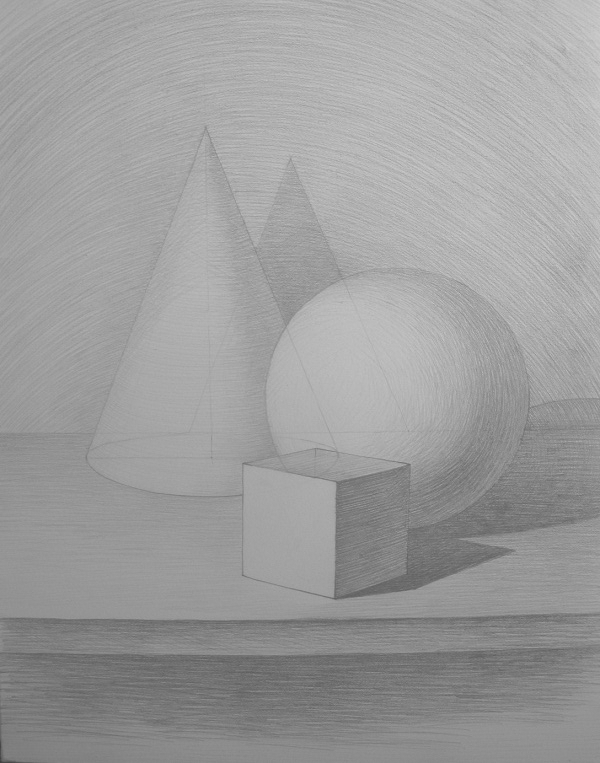
Here is such a still-life you can get.
Let's analyze a little more. See, which side is the lighting? It is not difficult to determine by Cuba. His side face is illuminated the most common. It means that the light source is located more from above. Therefore, the subject plane will already initially have a darker darker than the wall in the background. The only plot is the brightest on the subject plane - closest to us, in front of the cube. There is even a reflex from a white lighted cube plane. But still the tonality will be stronger than on this face of Cuba. And the general tone of the subject plane will be darker than the tone of the wall. This is how it is possible to "play" a touch and tone, creating space in a sheet.
By the way, reflexes are also on the shadow side of the cube, and on the ball, they reflex from the subject plane. See? But this only adds liveliness and realistity in the figure, and still the shadow remains the shadow-reflex should not have a tonality equal to the tonality of the illuminated surface. When you look at this site for a long time, you can often seem like this, but in fact you just need to give your eyes to relax, and then look at the whole picture entirely, the viewing look and analyzing everything in general.
Now the closest plane is closest to us, it gets enough for nothing to do not to do the same dark, but perhaps we needed to highlight the plot under it (under the table) as the darker. But we will not do this, since the main action does not happen under the table. I believe that it is sufficient to how actively shown in the oxide of the subject plane and how much is allocated on the floor of the scene, located under it. Important We passed this site and here it is enough. And also note how barcode lies in this place: Also, obeying the common line, the bar is combed already created by the mood of the composition with a horizontal direction of lines. And even though we will turn the tablet vertically, the figures are located, too, supporting the vertical, but this is not spoils the character of the stroke, on the contrary, it balances and gives about and static. Everything is balanced, harmoniously and perfectly gets along with each other.
That's how much we build space in the sheet. Work, you will succeed. Good beautiful still life With geometric figures, it is worth working to work a little over its creation. That's how gradually we learn how to learn how to draw, I will draw everything anything.
First stage. Determining the size of the ball, the point of the support and the plane on which it is located.

Second phase. Clarification of the diameter of the circle of the ball, determining the boundaries of light, halftone and its own shadow, reflex and falling shadow.
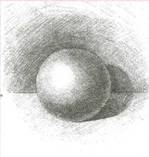
Third stage. The transmission of the volume with the strokes imposed on the shape of the ball. It is necessary to pay attention to the smoothness of the tonal transitions on the spherical surface.
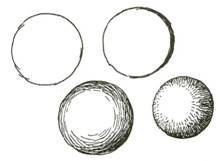
166. Transformation of the circle to the ball
See how simple circumference can be turned into a ball using various hatching techniques or only thickening the contour on one side.
Words do not have such strength as a few hours of practice in drawing these items. You can try to portray some simple things and geometric bodies.
Choosing items, take an egg or a monophonic ball as sphere-like models, a cardboard box can be a cube. Pyramids, cones and prisms are also easy to make from cardboard. But do not limit yourself only by white models, try to portray light and dark, matte and brilliant items.
Light, shadow and half play a significant role on the form of the subject. The artist, drawing a live model or still life, often experiments with light sources.
Use them consciously to the best way Transfer features of the shape and texture of objects, try to illuminate them from different sides.

167. Paper tape
The contrast of light on a dark or dark on a light background, the greater the closer the light source. Items fully lit from all sides look flat.
See how differently perceived the form depending on the change in the direction of the light source.
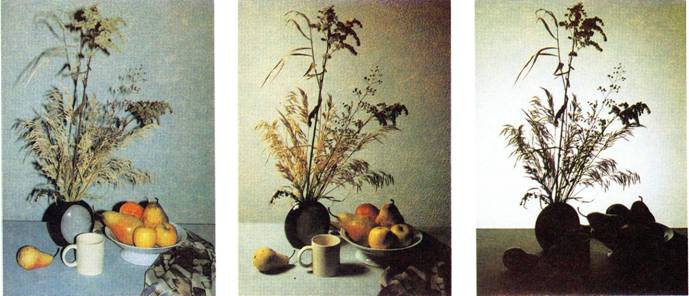
168. Still life with different lighting
Consider the figures 169 A, b. A smooth hatching of one tone does not transmit the volume form of objects. The imposition of strokes in the form of objects, taking into account the light and the shade, turns flat silhouettes into bulk things.
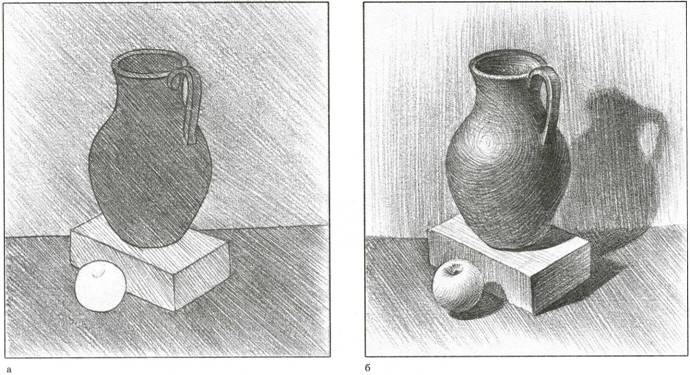
169. Still life: a - a plane tonal solution, b - volumetric tonal solution
Any geometric body consists of a shell, i.e. the outer surface, and a material that is filling it (Fig. 42). Each geometric body has its own form, which differs in composition, structure and size.
The composition of the shape of the geometric body is a list of compartments of the surfaces constituting it (Table 4). Thus, the shape of a rectangular parallelepiped consists of six compartments, surfaces (faces): two of them are the bases of the parallelepiped, and the remaining four compartments form a closed convex broken surface, called the side surface.
Figure 42. Geometric body: 1 - shell; 2 - surface compartments forming body shell
Form structure The geometric body is a form characteristic that shows the relationship and the location of surface compartments relative to each other (see Fig. 44).
These characteristics are interrelated and largely determine the form of a geometric body and any other object.
Over the form, simple geometric bodies are divided into polyhedra and the bodies of rotation.
Plane It is a private surface case.
Polyhedra - Geometric bodies, the shell of which is formed by compartments of the planes (Fig. 43, a).
The edges - planes compartments that make up the surface (shell) of the polyhedron; ribs - the segments of the lines for which the edges intersect; The vertices are the ends of the ribs.
Body of rotation - geometric bodies (Fig. 43, b), the shell of which is the surface of rotation (for example, the ball) either consists of a surface compartment of the rotation and one (two) compartment of the planes (for example, a cone, cylinder, etc.).
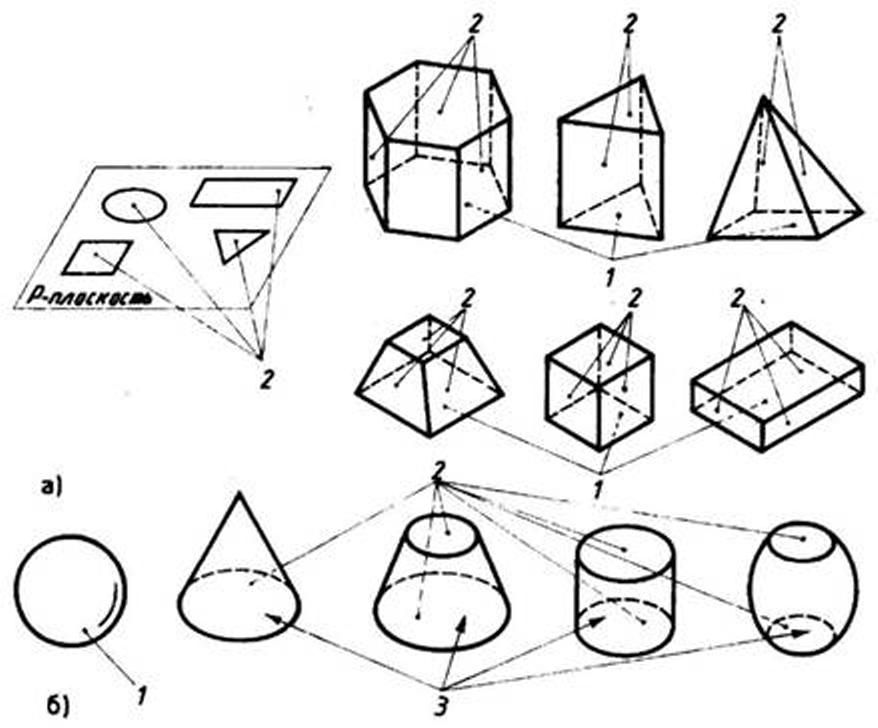
Fig. 43. Multichannels (a) and the bodies of rotation (b): 1 - sheath of the geometric body;
2 - plane compartments; 3 - Surfaces of rotation surfaces
4. Composition of ordinary geometric tel

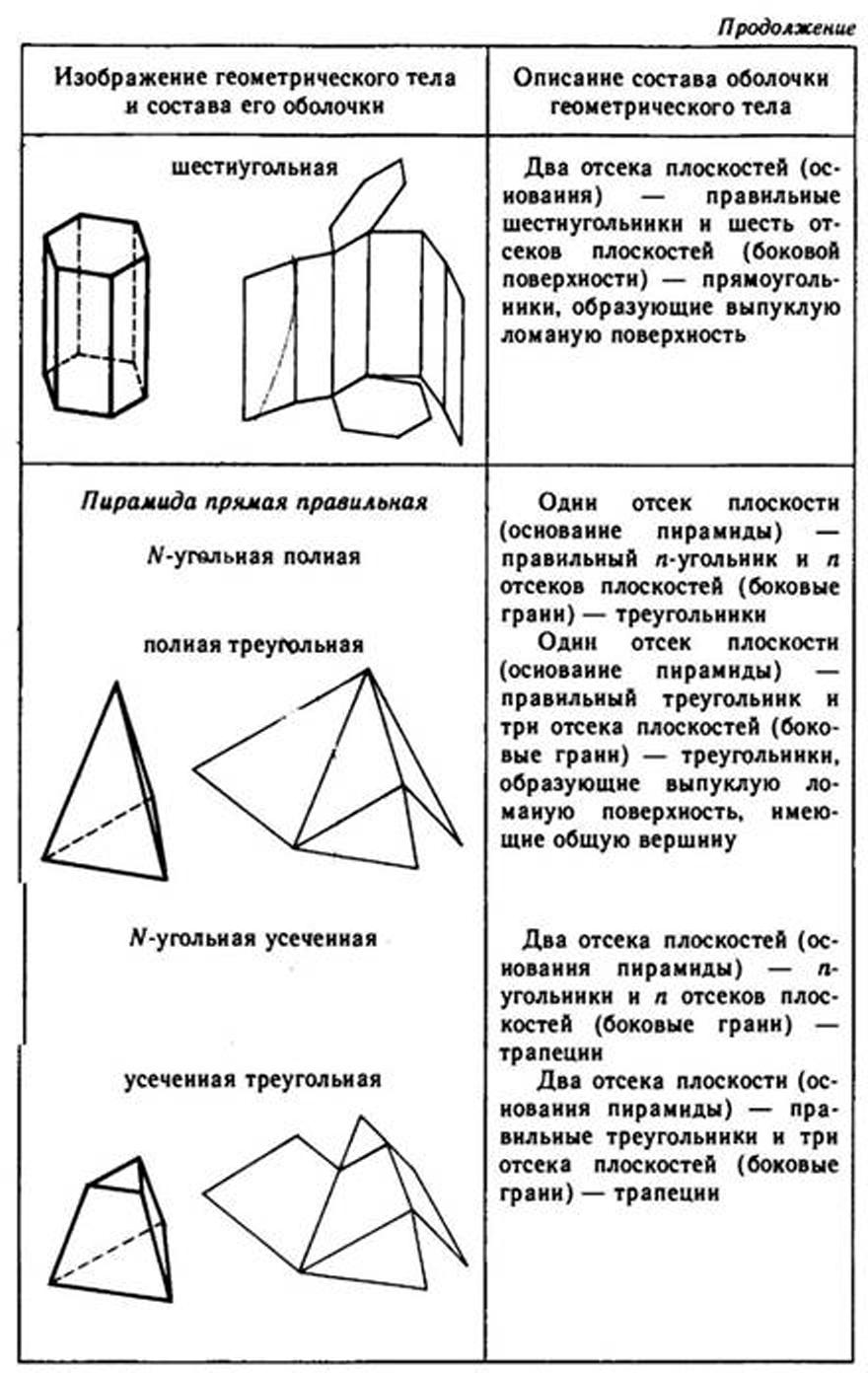

Form structure affects exterior appearance geometric body. Consider this on the example of direct and inclined cylinders (Fig. 44), the base compartments of which are located relative to each other in different ways.
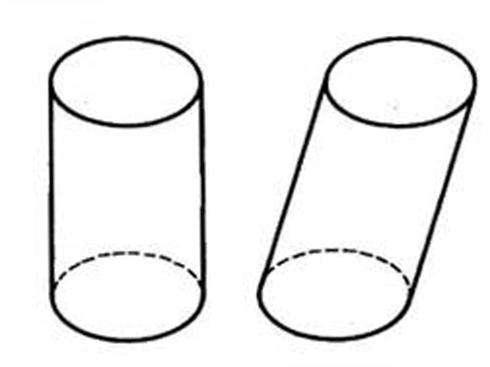
Fig. 44. Structural differences in the form of cylinders
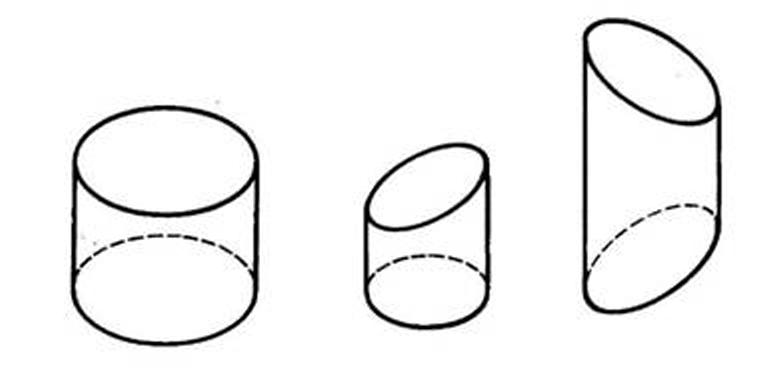
Fig. 45. Changes in shape of cylinders
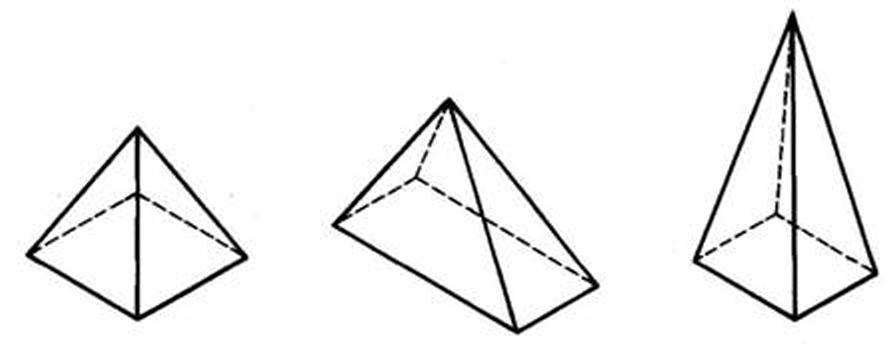
Fig. 46. \u200b\u200bQuadrangular pyramids of various shapes
Comparing the images of cylinders in Figure 45, it can be concluded that the change in the position of one of the base leads to a change in the shape of the geometric body.
The change in the height, width, length, the diameter of the base, the angle of inclination of the axial, the base position relative to each other significantly affects the shape of the geometric bodies. For example, consider quadrangular pyramids of various shapes (Fig. 46).
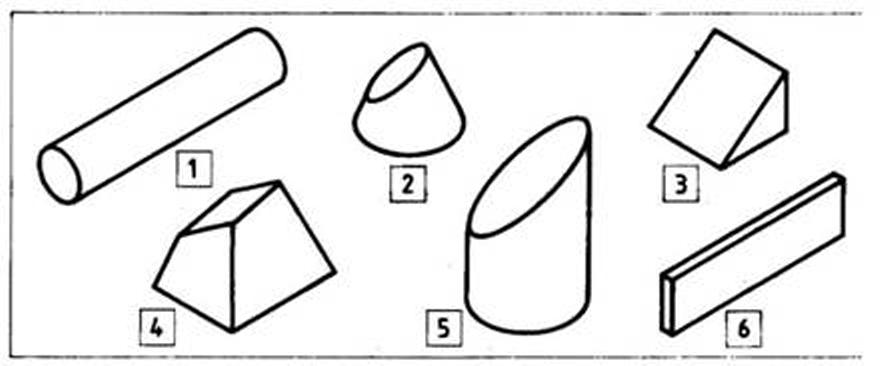
Fig. 47. Geometric bodies